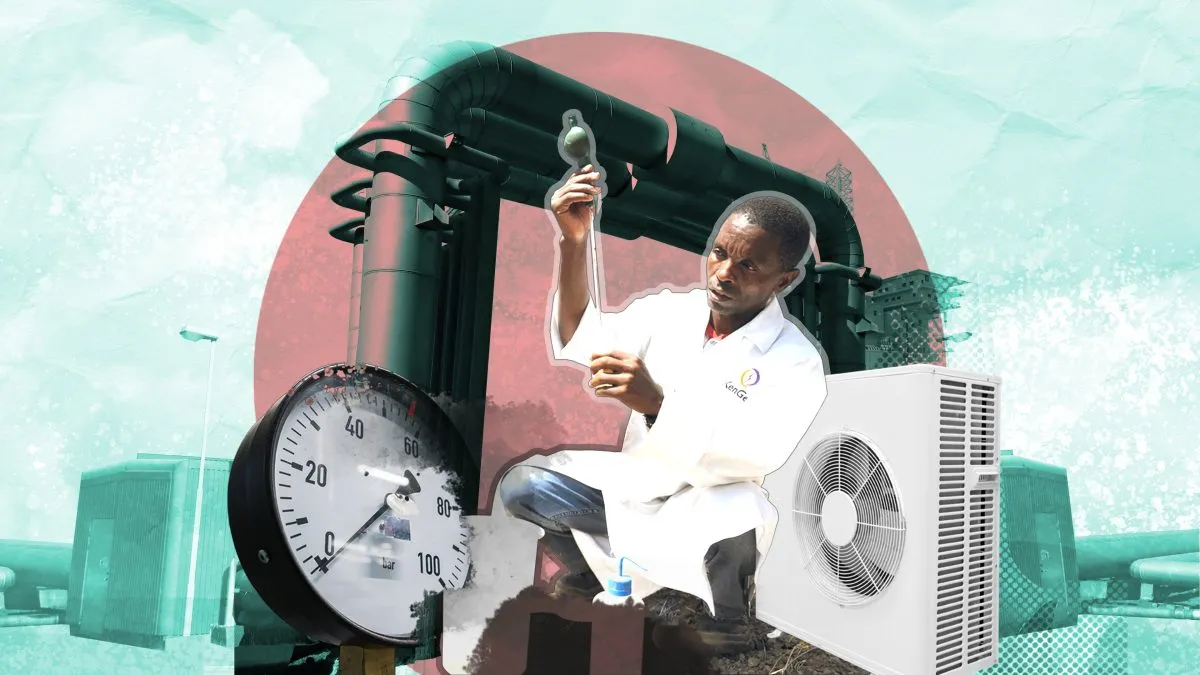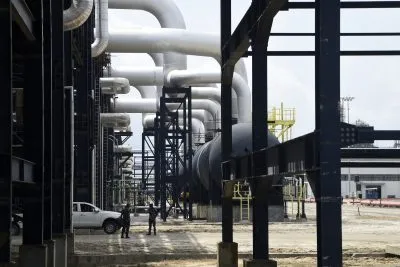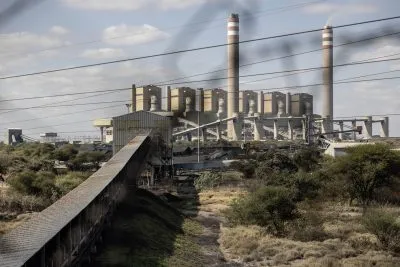Africa is breaking apart – literally. From the Gulf of Aden in the north, all the way to Mozambique in the south, the African continental plate is splitting along the East African Rift Valley. The two halves of the continent are moving apart by around half a centimetre a year. At this rate, within five to ten million years East Africa will have drifted off to become its own continent.
The good news is that the forces deep beneath the Earth’s surface that are responsible for this tectonic divorce provide Africa with a potentially vast supply of renewable energy. At numerous points throughout the Rift Valley region, flows of molten magma in the rift create underground reservoirs of superheated steam and water. Where geological conditions allow, these geothermal resources can be piped to the surface and used to generate electricity, or harnessed directly for heating, or to drive cooling systems.
Of all the countries in the region, Kenya has made by far the most progress in exploiting its geothermal potential. “Kenya has excellent geothermal resources”, says Jack Kiruja, an associate programme officer at the International Renewable Energy Agency, who was previously an engineer at the Geothermal Development Company in Kenya. It has, however, taken decades to develop the sector in the country. “It’s been a really long journey that has led to the success that we see today,” says Kiruja.
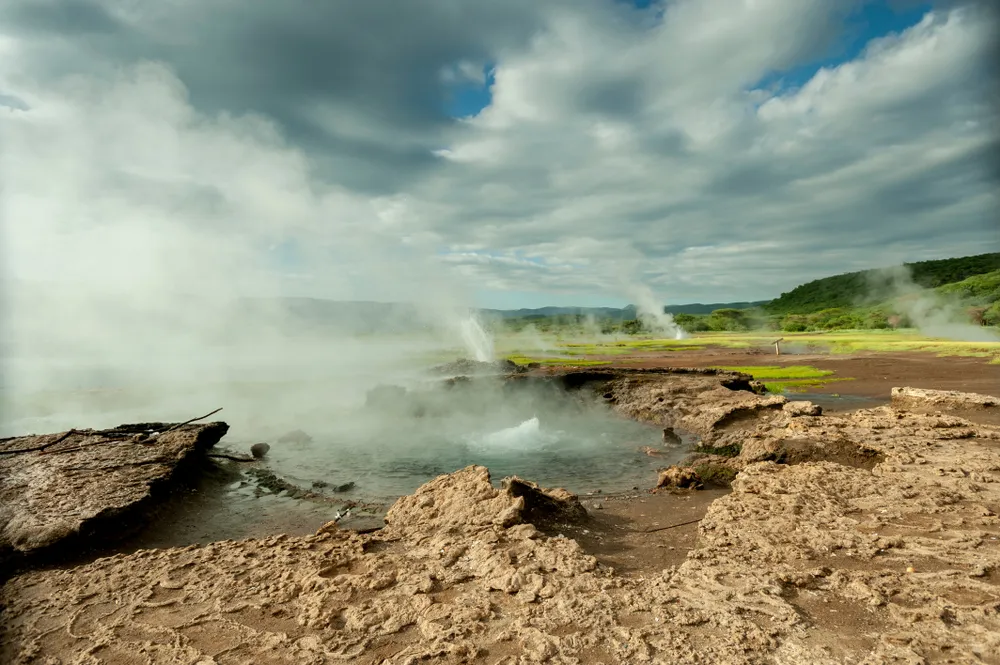
Indeed, Kenya first started to explore its geothermal potential as far back as the 1950s. But the sector only really took off from the late 1990s onwards – as the country looked for a way to combat electricity supply problems stemming from an over-reliance on hydropower.
Kenya now has the eighth-largest geothermal production capacity in the world, at around 950 MW. This makes up almost half the country’s electricity generation.
Geothermal energy has the added benefit of providing a baseload power source – and the government is aiming to reach a capacity of just over 1,600 MW through its Vision 2030 programme. As part of this effort, KenGen, the national electricity utility, is developing the world’s largest geothermal power plant, Olkaria VI, in Hell’s Gate National Park.
The growth of geothermal energy in Kenya has depended on supportive government policies, as well as the expertise of Kenyan engineers. But to fully understand the geothermal journey in Kenya and the rest of Africa, it is necessary to take a detour to a small island on the edge of the Arctic Circle.
Northern lights
A nondescript office building on the outskirts of Reykjavik, the capital of Iceland, doesn’t seem like an obvious place to look for the origin story of Africa’s geothermal industry. But within these walls, the Geothermal Training Programme (GTP) – an institution affiliated with UNESCO and largely funded by Iceland’s government – has been helping geothermal professionals from around the world develop their skills and connections for over 40 years.
Guðni Axelsson, the GTP’s director, says that the concept for the training centre came about in the late 1970s, when Iceland was looking for ways to develop a foreign assistance programme. “The idea was to use this pool of expertise that exists here in Iceland to try to support something that is quite unique that Iceland can really contribute in a meaningful and effective way.”
Iceland, like East Africa, is sited on the junction of two tectonic plates that are moving apart. The country has a population of less than 400,000, but stands as a giant of the geothermal world. Although several other countries generate more megawatts of electricity from geothermal sources, there is nowhere else where geothermal energy plays such a vital role in society. Iceland derives around 30% of its electricity from geothermal sources, along with 90% of its heating.
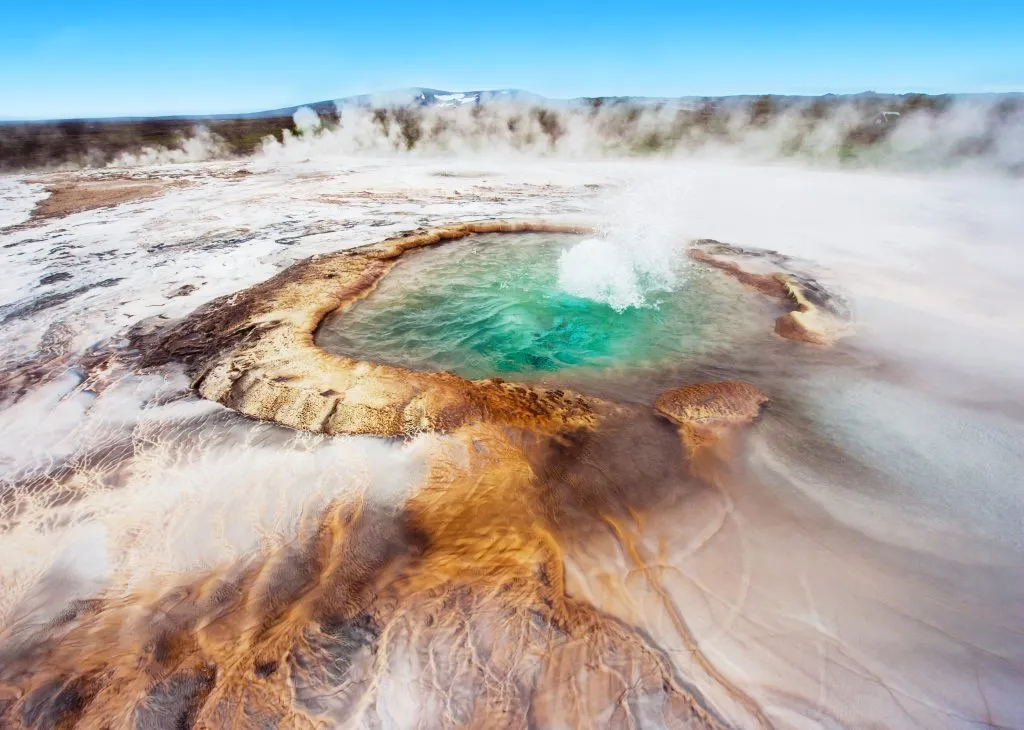
The GTP began with just two students – but now accepts around 20-25 people per year onto its six-month training scheme. Since the beginning of the programme, at least 140 Kenyans have been trained at the GTP. Many of the Kenyan students have gone on to become leading figures in KenGen and the Geothermal Development Company, the parastatal companies chiefly responsible for geothermal projects in Kenya.
Axelsson says that the GTP “can take a little bit of the credit” for the growth of geothermal power in Kenya. “They have taken great steps in their development, and we believe we have helped quite a lot with that.”
“One simple way to view that,” says Axelsson, “is that Kenya has by now surpassed Iceland in the installed capacity for electricity generation from geothermal – and they’ve done it quite rapidly in recent years.”
Vikings in the sun
Iceland’s role in developing geothermal energy in Africa goes well beyond the GTP. Icelandic companies are developing geothermal projects in several parts of the continent. Technical consultancies also play a key role in delivering Icelandic expertise.
“We are not building a lot of new power plants here in Iceland,” says Kristín Steinunnardóttir, a mechanical engineer at Mannvit, an Icelandic engineering consultancy firm. “We have to look abroad if we want to [expand].”
Mannvit is providing technical consulting services to the Geothermal Risk Mitigation Facility for Eastern Africa (GRMF), a donor-funded project that provides grants to early-stage geothermal projects. The company is also a drilling contractor at several projects in East Africa. But Steinunnardóttir cautions that the landscape for geothermal is challenging outside of Kenya.
“A lot of projects are just at the earliest stages. There’s a lot of potential – but not so much has happened already,” she says. “Some of the countries haven’t done any geothermal projects yet, so in some cases there aren’t any real regulations, and it can be complicated to get all the licences and so on to be able to develop a geothermal project.”
Reykjavik Geothermal, another Icelandic company, is developing two major geothermal power projects in Ethiopia along with other investors. Gunnar Orn Gunnarsson, the company’s chief operating officer, says that Reykjavik Geothermal chose to focus on Ethiopia more than a decade ago, after scouring the world for places to develop geothermal projects.
“It happens to be the best geothermal resources in the world that are still available,” says Gunnarsson, who describes the geothermal resources along the Rift Valley as a “string of pearls”.
Developing the Corbetti and Tule Moye geothermal power projects in Ethiopia has been far from plain sailing for Reykjavik Geothermal and its fellow investors. “You cannot imagine all the obstacles that we have met,” says Gunnarsson. He lists problems with a drilling contractor, along with Covid-19, the war in Ethiopia’s Tigray province and political unrest as some of the factors that have delayed the projects.
Gunnarsson adds that development finance institutions are not always well-positioned to support geothermal projects. “I think that the world needs to take a grip on itself if they want to help these nations to develop as fast as they need,” he says. Development banks must “loosen up on their risk profile” when it comes to geothermal, he says. “Their risk profile is so pathetic – they don’t take any risks.”
Risk and reward
This is problematic, since geothermal is an inherently risky investment. As when companies drill for oil and gas, there is always a sizeable chance that a geothermal drilling campaign will fail to find resources that can be developed commercially.
InfraCo Africa is part of the donor-funded Private Infrastructure Development Group, with a mandate to invest in projects that are perceived as risky for the private sector. It is one of the investors in the Corbetti geothermal project. Tim Jackson, senior business development manager at the company, says that InfraCo Africa decided to become involved in Corbetti partly because geothermal “is perhaps the toughest technology for the private sector to develop alone” due to the early-stage risk.
“The model adopted for the first private sector projects in Kenya and Ethiopia has proven to be both slow and challenging,” he says. “There is a need for more high-risk capital to manage the risky exploratory phase – this could either come from governments or private-sector players, working with concessional facilities.”
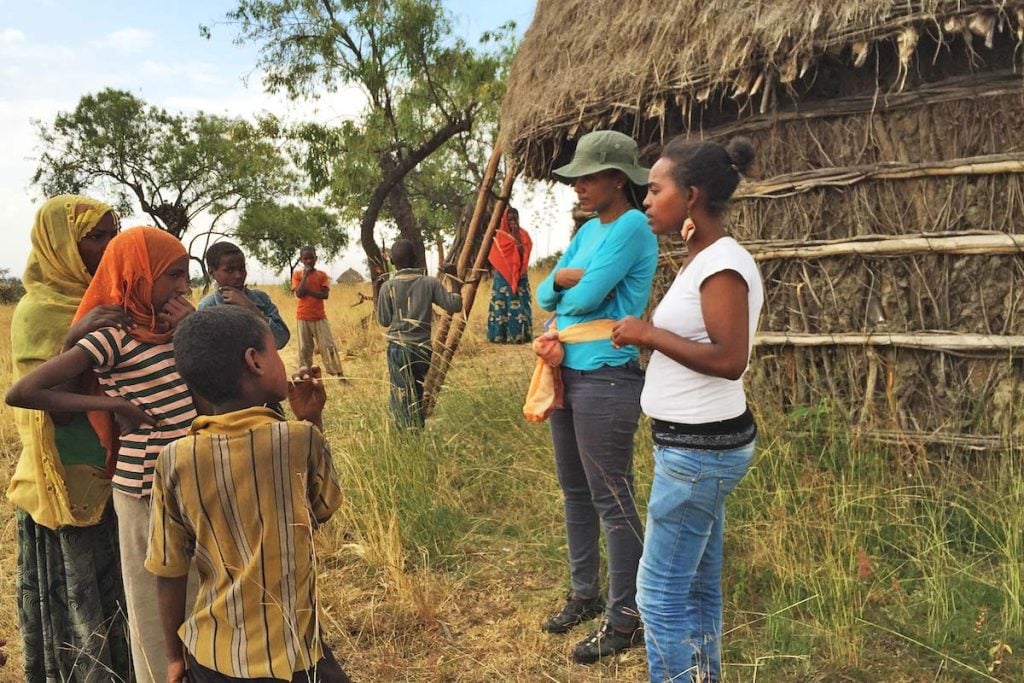
Indeed, one of the factors that has allowed Kenya to move faster than its neighbours is the willingness of publicly owned companies to develop geothermal resources. “They’re always able to attract cheaper financing,” says Kiruja. Concessional loans, he says, “have gone a long way in making geothermal development much cheaper than if this kind of financing was not available”.
Now, Kenya has become the regional geothermal powerhouse. Kenyan companies have progressed to the point where they are taking a leading role in the development of geothermal projects in neighbouring countries.
KenGen, for example, has secured contracts to drill wells in countries such as Djibouti and Ethiopia in recent years. Kiruja says that Kenyan companies began their overseas activities largely by providing geoscientific studies, but have assumed a more prominent role over time. “They have moved to the next level, where they are now getting involved in drilling of geothermal wells,” he explains. “My projection is that in the coming years, this is something that we could see happening more.”
Direct use
To generate electricity from the water and steam found beneath the surface, temperatures of at least 150 degrees Celsius are needed. Below this level, however, geothermal resources can still be used in other ways.
“There are many more countries that host the geology of the East African Rift, which have the potential for heat applications from medium-temperature geothermal resources,” says Jackson. “These heat-led projects have huge development potential because of the applications for agriculture – including greenhouses, fish farms, seed drying, dairy processing, chilled storage and abattoirs.”
The growing interest in these “direct use” applications is one of the key trends in the geothermal sector worldwide. Within Africa, the GRMF began by delivering grants only to geothermal projects that aim to generate electricity. Last year, however, it launched a programme to provide grants to direct use projects as well.
In Kenya, meanwhile, the Geothermal Development Company has announced plans for a health spa at its geothermal site in Menengai. The project aims to create a Kenyan version of Iceland’s famous Blue Lagoon, a spa heated by geothermal energy that attracts more than 700,000 tourists each year.
Drilling down
The path ahead for geothermal projects will never be straightforward. Aside from the development risks, environmental issues need to be managed. Carbon dioxide can be released in the course of drilling – though emissions are 99% lower than from equivalent fossil fuel plants, according to the US Energy Information Agency.
Kiruja notes that there are also risks of both underground and surface water being contaminated through geothermal activities, although with proper mitigation measures these risks are greatly reduced. He adds that along the Rift Valley geothermal resources are often found in protected areas and therefore have to be managed with extra care.
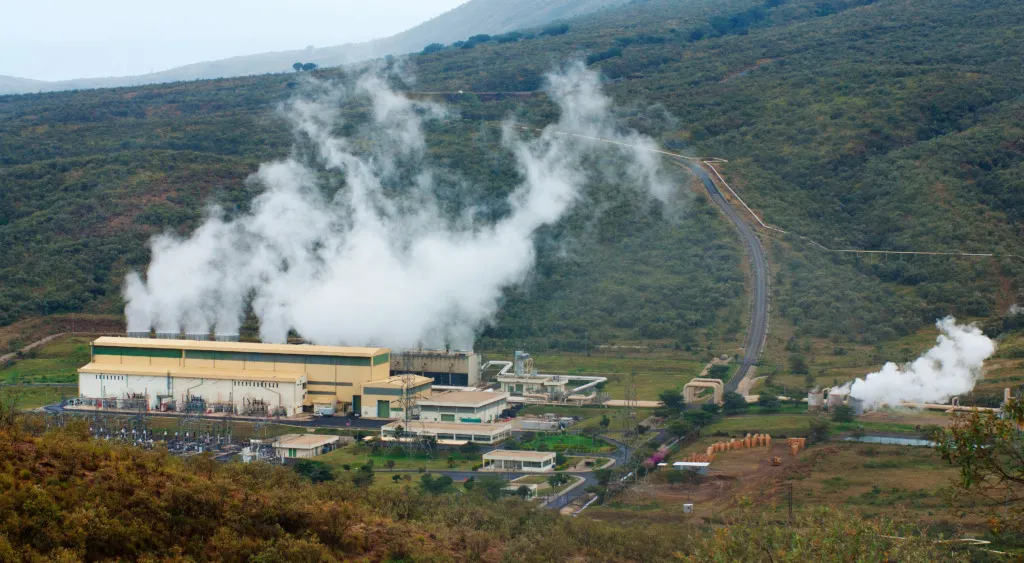
For example, there are already five geothermal power plants at Olkaria in Hell’s Gate National Park, with another in development. Kiruja says that Olkaria “is a good example of how they have been able to develop a geothermal resource in a national park without having adverse effects on the wildlife”. Various measures have been implemented to mitigate potential impacts, including designing pipeline routes to ensure that migrating wildlife are not obstructed.
Few would deny that the economic and environmental benefits that come with geothermal energy outweigh the potential risks. Africa can certainly draw inspiration from Iceland’s experience. Iceland was among the poorest countries in Europe before it developed its geothermal resources. Geothermal power has been instrumental in allowing the country to industrialise and ultimately achieve some of the highest standards of living in the world.
One of the key steps now is to ensure that policymakers fully understand the benefits that geothermal developments can bring. Axelsson says that training has played a vital role. But the factor that will be “most important”, he says, “is really to get politicians and governments aware of the possibilities”.
“The future at least could be bright,” says Axelsson. “But it needs a lot of support, both locally from governments, internationally from the international bodies, and in terms of training.”
Related articles
Want to continue reading? Subscribe today.
You've read all your free articles for this month! Subscribe now to enjoy full access to our content.
Digital Monthly
£8.00 / month
Receive full unlimited access to our articles, opinions, podcasts and more.
Digital Yearly
£70.00 / year
Our best value offer - save £26 and gain access to all of our digital content for an entire year!

 Sign in with Google
Sign in with Google 